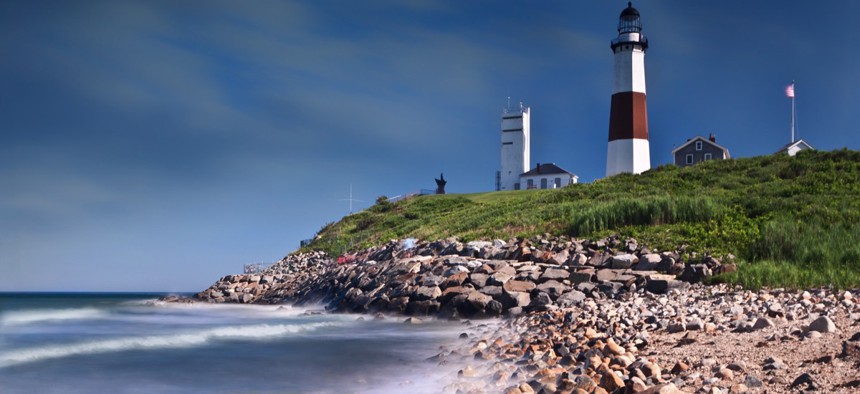Regional Plan Association Prepares for N.Y.C.-Area Resilience Overhaul

Montauk, New York

Connecting state and local government leaders
Four corridors in the New York, New Jersey and Connecticut will be redesigned for the first time in decades, with architects and planners addressing ecology and infrastructure challenges.
Four geographic corridors in the tri-state area of New York, New Jersey and Connecticut are set to undergo an urban redesign for resilience, courtesy of the winners of the Fourth Regional Plan Design Competition.
The Regional Plan Association, a New York City-based urban research and advocacy organization, awarded four teams of architects, designers and planners a Rockefeller Foundation grant for $45,000 to make policy and investments looking 25 years ahead.
Teams will refine and reveal their designs on June 27—forming the Fourth Regional Plan: A Region Transformed—for the metropolitan area.
“In the past three regional plans, design work was crucial to imagining the future of the region and to making that future legible through innovative representations,” said Paul Lewis, Princeton University School of Architecture’s associate dean, in Friday’s announcement. “From Hugh Ferriss’s atmospheric renderings to Rai Okamoto’s access diagrams, RPA’s plans have provided unique opportunities for advancing design innovation in concert with visionary transformation of the region. The challenge to the four teams is to build upon that history and envision the future structured around a more expansive notion of “corridor,” including transportation, ecology, access and equity.”

The highlands/forest corridor stretching from the Delaware River to Northern Connecticut will be overseen by the Port Urbanism and Range Design & Architecture collaboration, which will create new areas of production to improve ecology and infrastructure.
WORKac is reimagining mixed-use development in the communities of the inner ring/suburban corridor: Port Chester to White Plains, New York through Paterson, Montclair, Rahway and Perth Amboy, New Jersey.
A triborough-city corridor along a proposed passenger rail line linking Brooklyn, Queens and the Bronx will be spatially arranged to promote educational, employment and cultural opportunities by New York City design firm Only If and Dutch design firm One Architecture.
Lastly, Rafi Segal A + U will design resilient infrastructure bracing for the effects of climate change—retreating coastline and fragile marshlands—along the coastal areas of the bight/ocean corridor from Atlantic City, New Jersey to Montauk, New York.
“Creative design will play a pivotal role in ensuring our future success, from developing ways to adapt to rising sea levels to finding new uses for abandoned industrial areas, to expanding housing in ways that reduce segregation,” said Tom Wright, RPA president, in a statement.
Improved resident health and quality of life are at the forefront of the Fourth Regional Plan, as is environmental resiliency. Previous plans were developed in the 1920s, ’60s and ’90s.
Efforts to transform Hudson Yards, build the Second Avenue Subway and the redevelopment of Governors Island into an urban park are all products of RPA’s work.
“Ultimately, the realization of these designers’ visions will not only educate regional communities on the benefits of resilience, but also highlight the multiple dividends that can be achieved by incorporating resilience practices into a design concept,” Sam Carter, the Rockefeller Foundation’s managing director, said in the announcement.
Dave Nyczepir is a News Editor at Government Executive’s Route Fifty and is based in Washington, D.C.

NEXT STORY: A survival guide for the coming AI revolution





